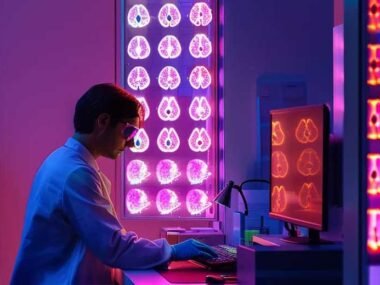Picture yourself as a healthcare provider with a tight schedule and limited time for lengthy training. Suddenly, you realize that your ACLS certification is about to expire. You must recertify quickly, without compromising the quality of the training. This is where a fast ACLS certification course comes in. It is the most streamlined program for working professionals with clinical experience who also need robust recertification.
While these accelerated programs are shorter in duration, they do not cut corners on the key competencies required in cardiovascular emergencies. You can easily focus on hands-on, high-impact skills to save lives if you do one of these programs. Now, let’s learn more about what skills you should prioritize in a fast ACLS certification course below.
What Is a Fast ACLS Certification Course?
A fast ACLS certification course is designed for those who need to recertify quickly due to time constraints. You can complete it within just 3 to 4 hours instead of the traditional two-day format. The curriculum usually includes hands-on practice, algorithm memorization, and real-time simulations. Despite the shortened duration, this certification is equally valid and meets the same national guidelines as standard courses.
The courses are best suited for:
- Physicians, nurses, and advanced healthcare providers with prior ACLS experience.
- Individuals who are renewing their certification rather than learning it from scratch.
- Clinicians who are comfortable with core concepts like ECG interpretation, cardiac pharmacology, and emergency response.
What Skills Are Prioritized in a Fast ACLS Certification Course?
Fast-track ACLS courses operate on the understanding that the learner already has a strong foundation. Instead of covering everything from scratch, these courses prioritize the high-impact, time-sensitive skills that significantly influence patient outcomes during a cardiac emergency. These skills are for healthcare professionals who may be called on at a moment’s notice to lead or assist in resuscitative efforts. The following are the key areas of focus in any fast ACLS course:
High-Quality CPR and Chest Compression Techniques
Even in a fast-paced certification setting, instructors dedicate time to perfecting CPR. Participants revisit key elements, such as the correct compression depth (at least 2 inches for adults) and rate (100–120 per minute). They also get to learn the importance of allowing complete chest recoil. Emphasis is also placed on minimizing interruptions during compressions, especially during rhythm checks or airway interventions.
Courses often incorporate manikins with real-time feedback devices, allowing participants to practice and refine high-quality CPR. This hands-on training enhances skills that can significantly improve survival rates, even before advanced interventions are initiated..
ECG Rhythm Recognition and Interpretation
Fast ACLS training strongly emphasizes the ability to quickly and accurately identify cardiac rhythms. Participants review ECG strips representing both common and dangerous rhythms, such as ventricular fibrillation, pulseless VT, bradycardia, and asystole. The course teaches learners how to correlate ECG rhythms with patient presentation to determine the correct interventions.
Quick decision-making is encouraged through time-sensitive case scenarios. Since most ACLS algorithms are rhythm-dependent, competency in ECG interpretation is fundamental.
Mastery of ACLS Algorithms
ACLS treatment algorithms provide the step-by-step clinical guidance needed during cardiac events. You can easily memorize and apply algorithms correctly if you have undertaken a fast-track course. These algorithms are essential for responding to cardiac arrest, bradycardia, tachycardia with/without a pulse, and post-cardiac arrest care.
Instructors of these ACLS courses often use mock emergency simulations to teach you more about these algorithms under pressure. Later, you can easily keep these steps in mind and recall them when needed during real emergencies.
Advanced Airway Management
Demonstrations and practice sessions are a key part of these fast courses. These often teach you about bag-valve-mask ventilation, insertion of supraglottic airways, and endotracheal intubation. The primary focus is on recognizing ineffective ventilation, ensuring correct airway placement, and preventing complications like gastric insufflation.
Participants are trained to manage ventilation rates based on the presence or absence of a pulse, which is critical for optimizing oxygen delivery and avoiding hyperventilation.
Use of Emergency Cardiovascular Medications
Fast ACLS courses ensure that participants are familiar with the medications used during resuscitation. Key drugs like epinephrine, amiodarone, atropine, and adenosine are reviewed in terms of dosage, indications, administration routes [IV (intravenous) delivery, where medication is injected directly into a vein, and IO (intraosseous) access], and timing.
Learners are given scenario-based prompts to decide when and how to administer these medications within the algorithmic framework. This practical understanding is crucial since medication errors can delay recovery or worsen outcomes in high-stakes scenarios.
Team Communication and Code Leadership
Efficient team dynamics can make or break a resuscitation attempt. Fast ACLS courses include modules on closed-loop communication, role assignment, and assertive leadership during codes. Participants are encouraged to verbalize their actions, confirm orders, and provide feedback during team-based drills. The role of the team leader for coordinating compressions, defibrillation, medication, and airway interventions is also emphasized. These soft skills are essential for maintaining order and ensuring seamless teamwork under stress.
Recognition of Reversible Causes (Hs and Ts)
Understanding and identifying reversible causes of cardiac arrest (the “Hs and Ts”) is critical for tailored interventions. Learners often review the 10 common causes: Hypoxia, Hypovolemia, Hydrogen ion (acidosis), Hypo-/hyperkalemia, Hypothermia, Tension pneumothorax, Tamponade (cardiac), Toxins, Thrombosis (pulmonary or coronary), and Trauma.
Instructors guide learners on how to identify the signs and symptoms of these causes. They also learn more about code scenarios and incorporate them into their decision-making process. Quick recognition of these reversible causes can change the outcome of resuscitation efforts.
Post-Cardiac Arrest Care and ROSC Management
Securing Return of Spontaneous Circulation (ROSC) and post-arrest care is the key to ensuring a patient’s well-being. FastACLS courses teach learners the immediate steps following ROSC, including maintaining oxygen saturation above 95%, managing hypotension, and initiating temperature control measures. Emphasis is placed on the early identification of myocardial infarction and proper hand-off communication to the ICU or cath lab teams.
Common Misconceptions About Fast ACLS Courses
Some healthcare professionals hesitate to enroll in accelerated ACLS programs due to various myths. It becomes necessary to bust those myths so that aspiring professionals can easily complete their courses and enhance their skills. These include:
Fast ACLS Courses Are Not as Effective as Traditional Courses
Fast ACLS courses are designed for experienced healthcare professionals and often use high-intensity simulation methods that are just as effective as traditional lectures. These courses also cover key topics like CPR, Automated external defibrillator (AED) usage, and other lifesaving skills for healthcare professionals.
There’s Not Enough Hands-on Practice
Most reputable fast ACLS courses ensure that a majority of the time is spent on hands-on practice. So, there’s ample opportunity for professionals to work through real-life scenarios with instructors guiding and giving feedback, helping them build skills and confidence..
ACLS Courses Are Only for Physicians
While physicians often enroll in fast ACLS programs, they are also open to nurses, paramedics, and other trained providers who meet eligibility criteria. All you need to do is approach an accredited organization in the United States and enquire about the course of your choice.
Enhance Your Skills With a Fast ACLS Certification!
For busy professionals needing a quick renewal, fast ACLS certification is the ideal option. These streamlined programs can also help you upskill yourself in the same way as traditional programs. It allows you to prioritize key skills, such as high-quality CPR, emergency pharmacology, and team leadership. So, if you’ve taken a fast ACLS course, then you can easily help with cardiac emergencies.
The best part about a fast ACLS certification is that you can complete it within a few hours. Some of you may have doubts regarding the course and its benefits. So, make sure to go through the misconceptions section in this guide to bust your myths. On that note, if you’re ready to upskill yourself, enroll in an ACLS certification now!










